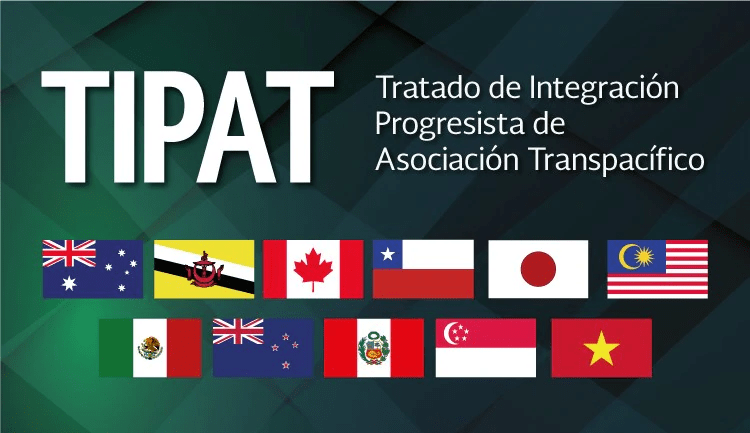The Trans-Pacific Partnership Agreement (CPTPP) contains numerous specific disciplines on the automotive industry throughout its chapters, annexes and appendices, as well as in the bilateral side letters.
In this regard, the World Trade Organization (WTO) analyzed this sector and, as part of this, prepared a chart showing the final stage of liberalization of new automotive goods under Harmonized System (HS) headings 8702 to 8705.
Of all CPTPP countries, only Mexico‘s imports of new passenger, goods and special-purpose vehicles (HS headings 8702, 8704 and 8705, respectively) from Japan will remain subject to duties at the end of the implementation period.
Liberalización de las importaciones de mercancías automotrices nuevas
CPTPP entered into force on December 30, 2018 for Australia, Canada, Japan, Mexico, New Zealand and Singapore, on January 14, 2019 for Vietnam and on September 19, 2021 for Peru. The remaining three signatories (Brunei Darussalam, Chile and Malaysia) have not yet ratified CPTPP, so it is not yet in force between them and the other eight Parties.
The last tariff reduction in the automotive industry will take place in 2027 (2028 in the case of Vietnam).
Thereafter, a preferential tariff of 1.25 to 3.75% or 7.5% will apply depending on the good.
CPTPP
Mexico is also the only Party that applies a different tariff elimination schedule -or «different tariffs»- to imports from Japan.
Australia, Mexico and Vietnam have different liberalization schedules for used goods, which will remain subject to duty at the end of the implementation period.
In the case of Vietnam, tariff-rate quotas also apply.
Trade between Canada and Japan in motor vehicles classified in HS heading 87.03 and, whenever specified, an «originating motor vehicle» in accordance with the rules of origin of Chapter 3, is subject to the following provisions:
- An MFN clause is incorporated into a bilateral side letter (dated March 2018) on rules regarding «technical regulations, standards or conformity assessment procedures relating to motor vehicle safety and emissions adopted or applied by Japan» with respect to third countries.
- In addition, Japan and Canada may apply transitional safeguards to covered goods (Article 3) under less stringent conditions than general transitional safeguards.
- In Article 4, a special expedited dispute settlement mechanism is established.
- It also establishes a bilateral Motor Vehicle Committee composed of representatives of Canada and Japan. Its functions include monitoring the implementation of the Parties’ obligations with respect to motor vehicles, consulting on matters affecting bilateral trade and investment, and facilitating further cooperation with respect to emerging issues relating to, for example, the manufacture, import, sale and operation of alternative fuel motor vehicles, and issues relating to other markets. The Committee will meet on mutually agreed dates. As of February 2021, the Committee had not yet met.
![]()

